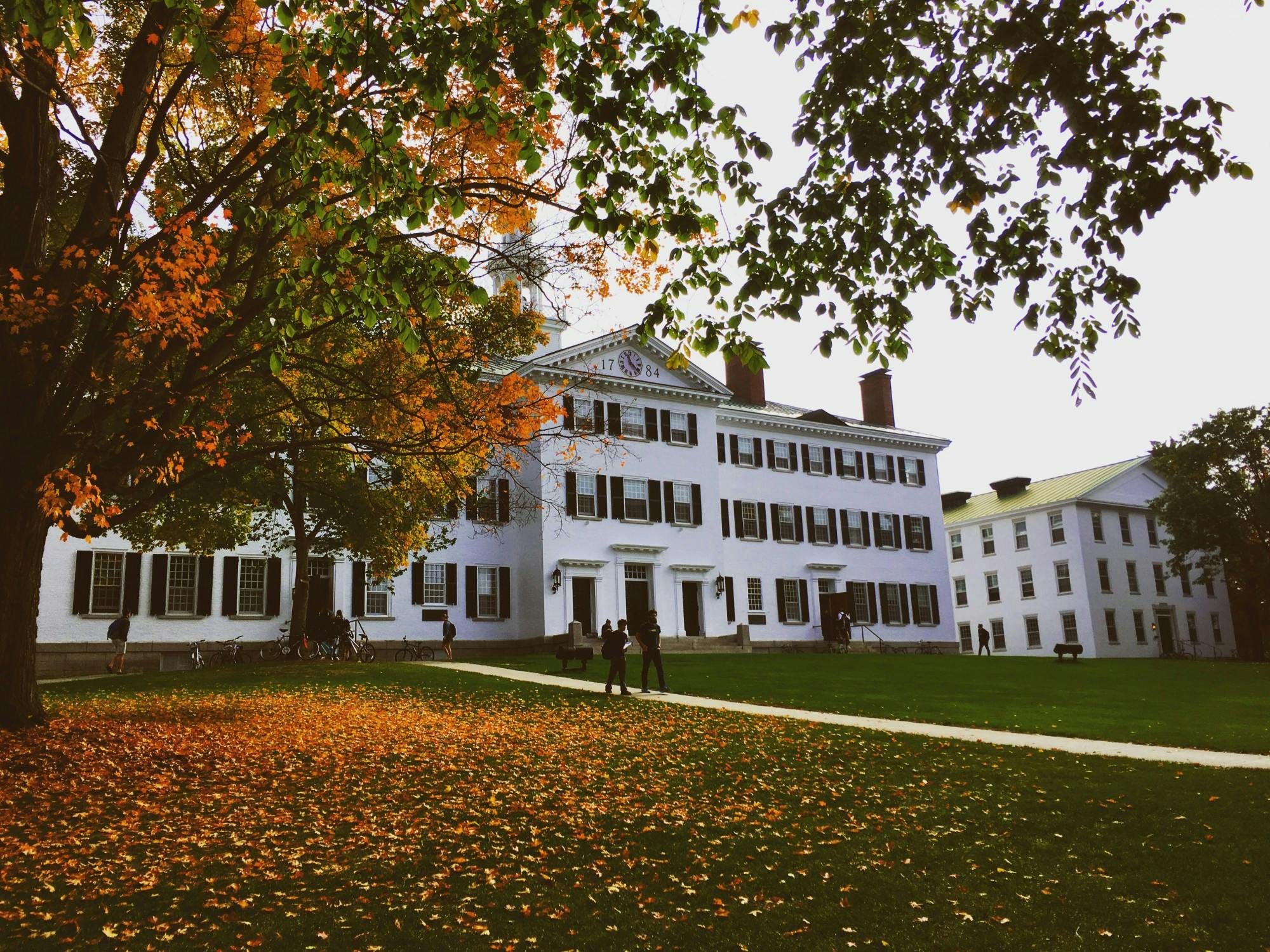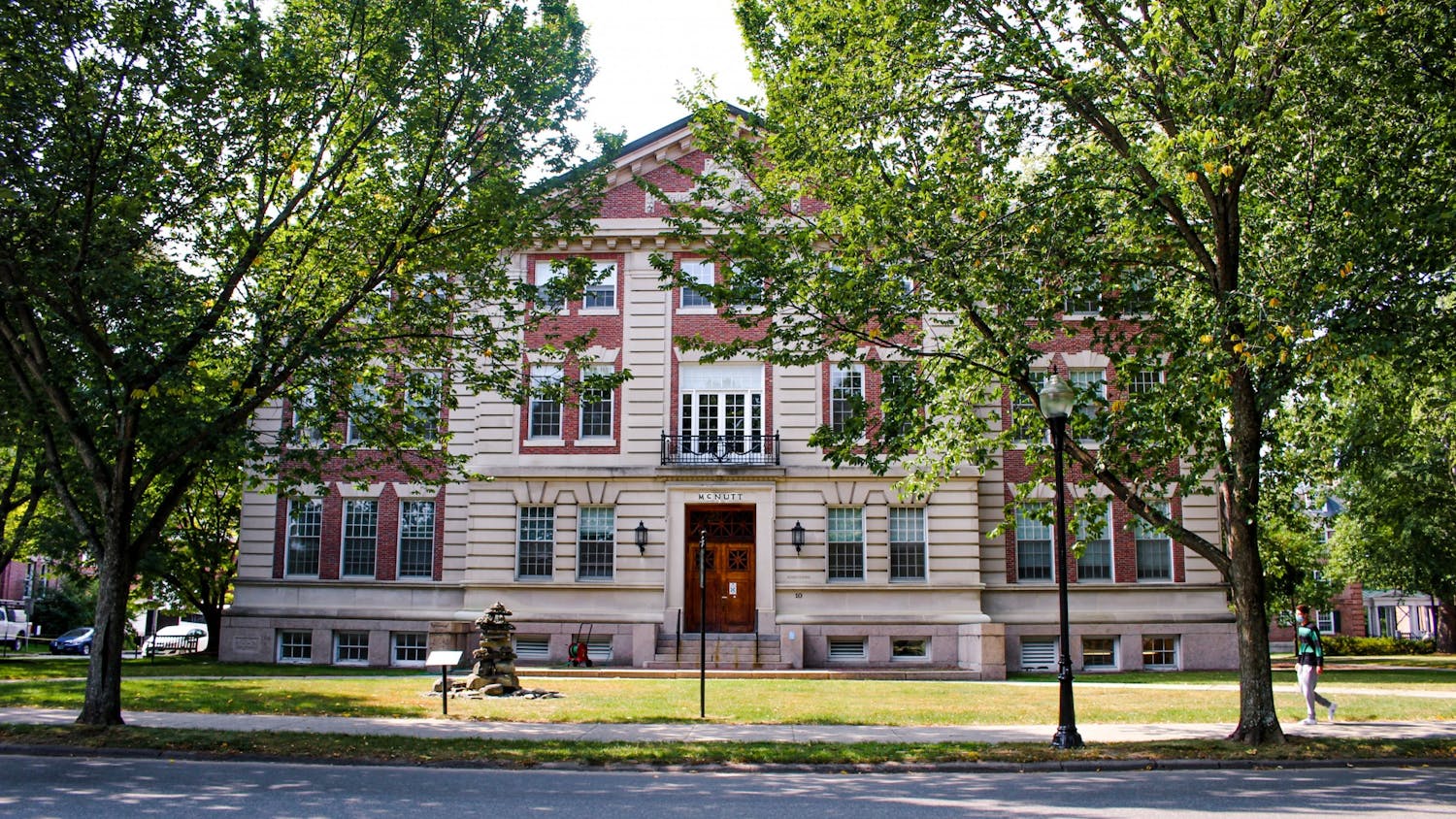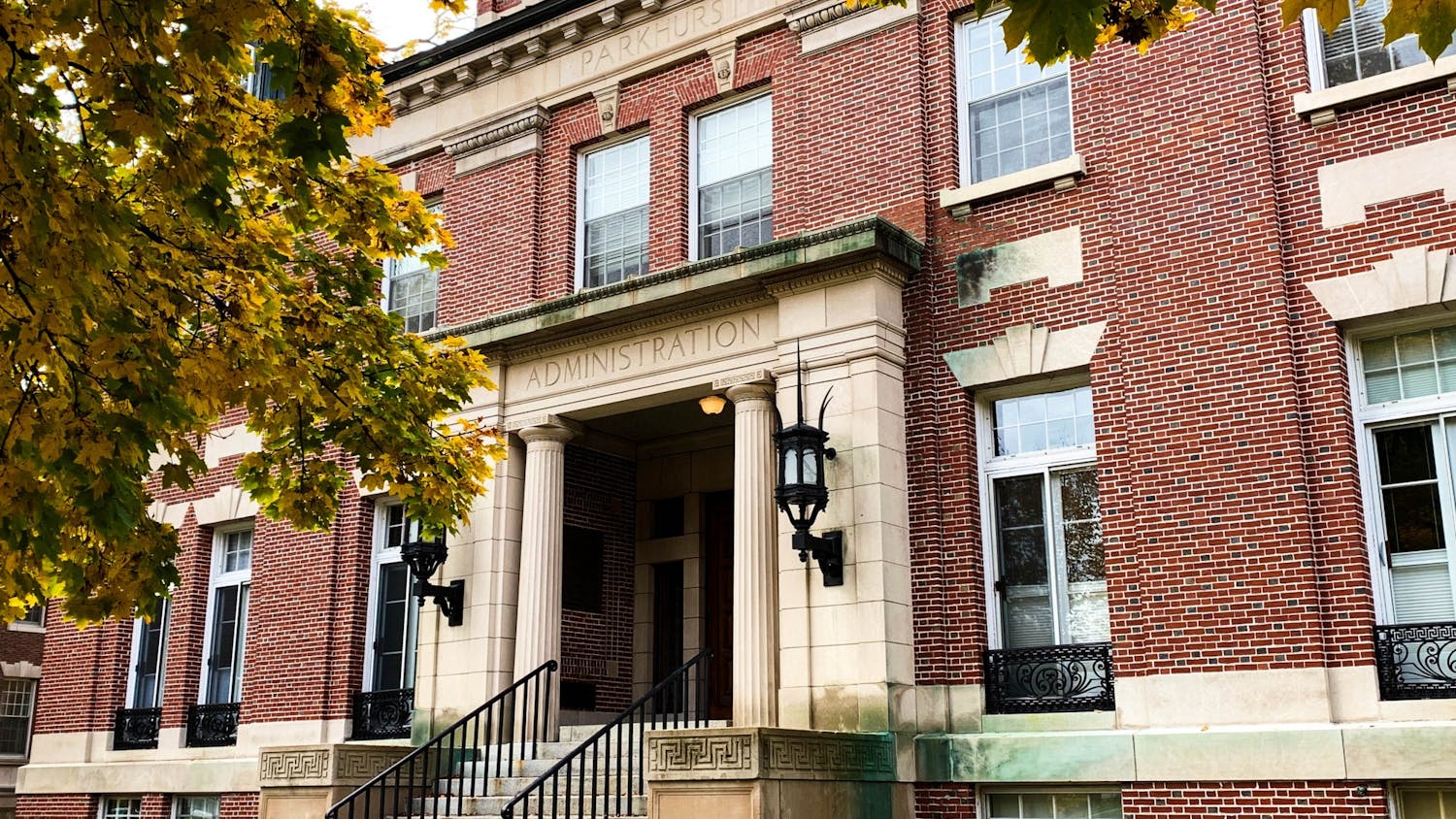Dartmouth’s mask requirements, weekly testing and restricted gatherings seem to have successfully staved off the virus this fall. Even as students returned to campus for the College’s first term of on-campus operations amid the pandemic, COVID-19 positivity rates remained below a tenth of a percent. However, some students and parents raised concerns that the regulations came at a cost to mental health, as gathering rules meant many students weathered the pandemic largely alone.
Since it began regular testing in July, Dartmouth has administered more than 61,000 COVID-19 tests to students, faculty and staff. As of Dec. 18, there have been a total of 46 positive tests — yielding a positivity rate of 0.075%. According to Provost Joseph Helble, Dartmouth’s positivity rate ranks second-lowest, beaten out only by Stanford University, among approximately 50 different universities with similar testing data in the Association of American Universities.
“I think everyone should be proud of how the community came together in really challenging times,” Helble said. “... There were campuses that saw positivity rates of seven to 10%, which is staggering, and we finished at 0.07%. That's 100 times lower.”
Within the Ivy League, average positivity rates — which colleges began recording either in summer or fall, depending on the college — have varied. Brown University, Columbia University, Harvard University and Princeton University all had positivity rates between 0.1% and 0.25%, while the University of Pennsylvania had the highest cumulative positivity rate at 1.41%. However, testing programs, frequency of testing and the number of students on campus varied across the colleges. Middlebury College — comparable in size and setting to Dartmouth — finished the fall with a rate of 0.04%. Many larger, urban universities or state schools have seen far more cases.
In an email to the student body prior to the fall, COVID-19 task force co-chair Lisa Adams wrote that a one percent threshold of positive COVID-19 tests would be one indicator for reassessing on campus operations. Considering this metric alongside other indicators, Helble said that Dartmouth never reached a point during the fall term that required contemplating transitioning entirely to remote learning.
Although the positivity rate remained relatively low, there were spikes in the number of students in quarantine and isolation at the beginning and end of the term. One spike occurred in mid-September, when more than 60 students and staff were quarantined. On Nov. 18, the COVID-19 dashboard reported a term high of 83 students and staff in quarantine. Students may have started to “let their guard down” towards the end of the fall, Dean of the College Kathryn Lively said.
In addition, Lively said that the number of contacts identified for each person while contact tracing increased compared to the beginning of the term — especially for freshmen, whose networks expanded as the weeks progressed. This contributed to higher numbers of students in quarantine, as more students could be identified as having a risk factor for exposure if one student tested positive.
“We had underestimated the number of contacts,” Lively said. “We originally thought just on average it should be between five and 10, but some of the ones later in the term were more like 17.”
All students were required to sign the College’s “Community Expectations” agreement to live on campus for the fall term, which included guidelines for gathering amid the pandemic. Violations of this agreement resulted in some students losing on-campus privileges during the fall.
According to Helble, the College investigated more than 600 reports of possible violations of community health protocols, which Lively said were mostly sent via the LiveSafe app or through email by undergraduate advisors, students or town members. As a result, 86 students were asked to leave campus during the fall term. Many of these removals resulted from large student gatherings, such as Halloween parties.
Some students and parents expressed concern that the College’s regulations, such as its “zero-tolerance” policy over COVID-19 guideline violations in the fall, failed to properly support students’ mental health. Nearly 300 Dartmouth parents signed on to a petition calling for more social spaces and loosened on-campus gathering restrictions in the winter. In an open letter to the College, Celeste D’Costa Ulicki ’24 wrote that “COVID-19 poses an equally serious threat to [students’] mental well-being,” arguing that mental health should also be prioritized in discussions of campus guidelines that protect physical health.
“While Dartmouth does have mental health resources, they do not compensate for social interaction,” D’Costa Ulicki wrote. “Coupled with the fact that on-campus students are removed from their support network of family members, [the College’s] failure to consider the mental health implications of [its] COVID-19 policies is astonishingly alarming.”
Lively said that mental health was an important piece in developing policies for the winter, after hearing that some students “were not able to make connections [and] felt very isolated” over the fall.
“There are a lot of things that we just didn't know [in the fall],” Lively said. “Now we know more, and I think we feel comfortable enough in the testing and the approach that we can be a little bit less [restrictive].”
While colleges across the nation developed various plans for remote and hybrid learning, the driving factor behind Dartmouth’s plan to bring back half of its students was the number of single dorm rooms that could be provided, according to Adams. She explained that single rooms help to limit contact and prevent transmission between students.
Other considerations included facility capacities — limiting the number of people in spaces like the Class of 1953 Commons, Baker-Berry Library and Alumni Gymnasium — and support networks on campus throughout the term, COVID-19 task force co-chair Josh Keniston said.
“One of the things that we were really committed to was [bringing] students back, but we want to make sure that the term can be successful [and] that we can get through the whole term,” Keniston said. “Part of that was making sure that we weren't pushing the limits so far that we were going to break down in the middle.”
This winter will see a number of changes to the College’s COVID-19 protocol. While prior guidelines stated that students who were sent home for violating COVID-19 policies in the fall would not be allowed to return until next fall — a full academic year later — Helble said in his “Community Conversations” broadcast on Dec. 9 that the removal period would be shortened to two terms.
Lively said that Dartmouth’s punishments for pandemic-related infractions are in some ways “more lenient” than those of other colleges, as Dartmouth separates the Community Expectations agreement from judicial processes.
“Many of our peers have used suspension or probation or things that would actually land on someone's transcripts as a record,” Lively said. “We tied it strictly to residential revocation or access to campus. … It also doesn't undercut or interfere with [students’] ability to continue their studies — it's just a matter of you're being asked to transition to remote.”
In the winter term, students will have additional opportunities to engage with each other in common spaces such as the Top of the Hop, and they will also be able to visit other dorm buildings. Helble said that facilitating appropriately distanced activities will provide students with space to socialize without violating the Community Expectations agreement and risking the loss of on-campus privileges.
To avoid the large number of contacts and subsequent quarantine periods from increased interactions, testing will also be increased from once a week to twice a week in the winter. According to Lively, this will help to limit potential COVID-19 cases by reducing the number of people students have interacted with between test results.
“With any give there's a little take,” Lively said. “While we'll be opening opportunities for students to interact with one another … we're moving to a two per week [testing schedule].”
The revamped testing regimen could also reduce the need for quarantine and isolation housing. Dartmouth kept over 500 beds available in the fall — though only about 8% of this capacity was used, according to Adams. The College plans to maintain the same amount of quarantine and isolation housing for the winter term. However, with a flexible plan depending on COVID-19 numbers in the winter, Helble said residential capacity could be adjusted for the spring.
“I am hopeful that we can find a way to bring more students back to campus spring term,” Helble said. “This is one of the things we'll be looking at carefully for spring term, but we want to make sure, with winter being challenging, that we are in a position to navigate the term successfully.”




